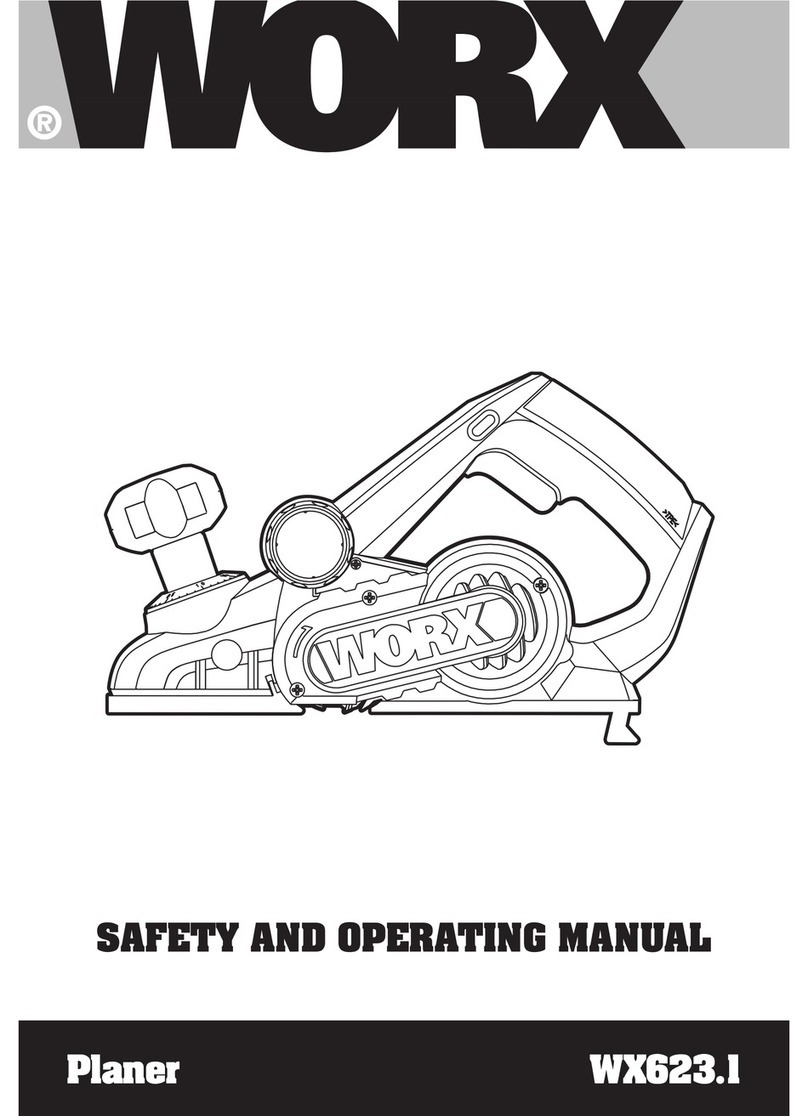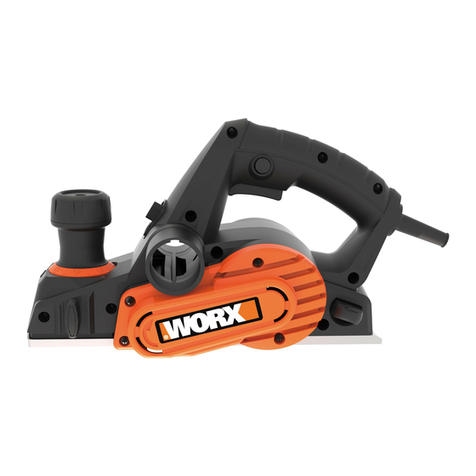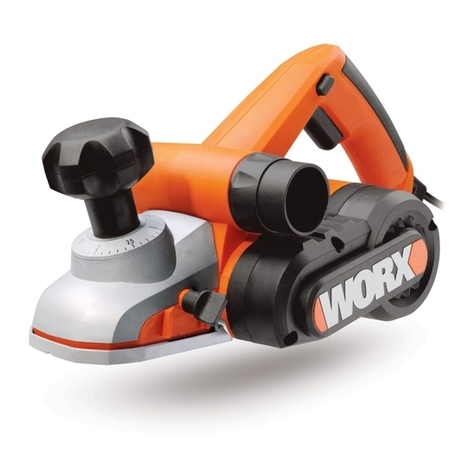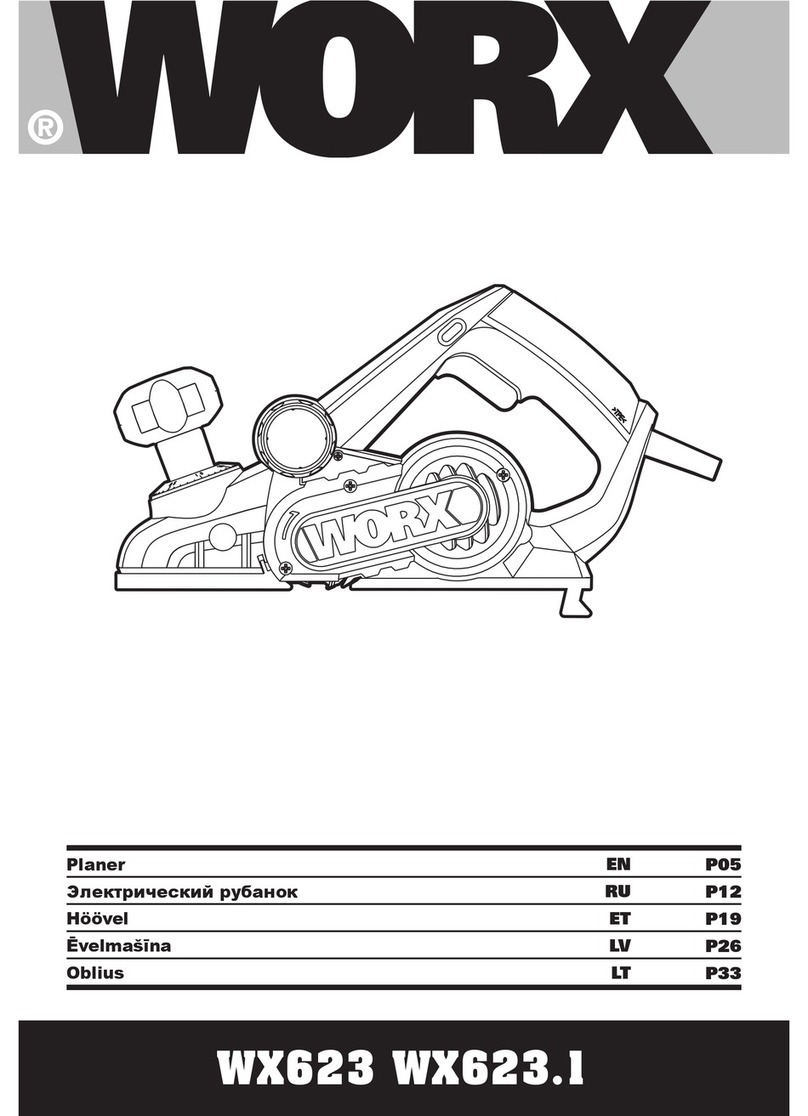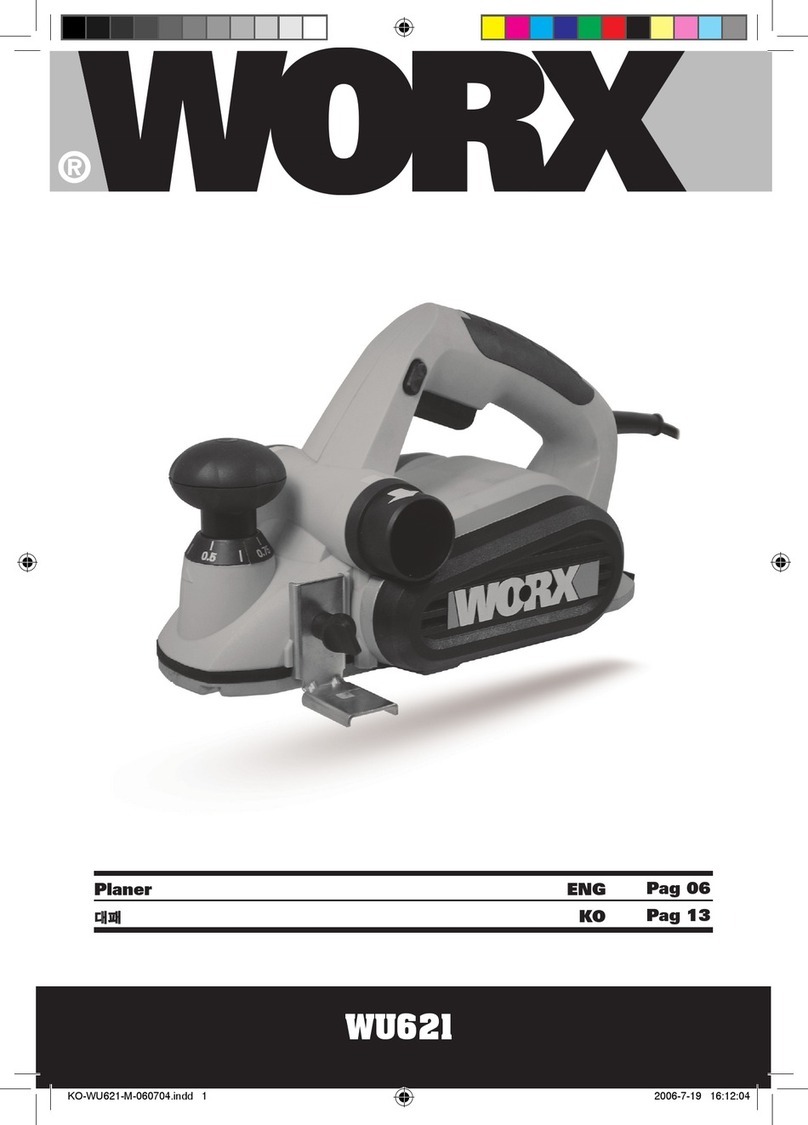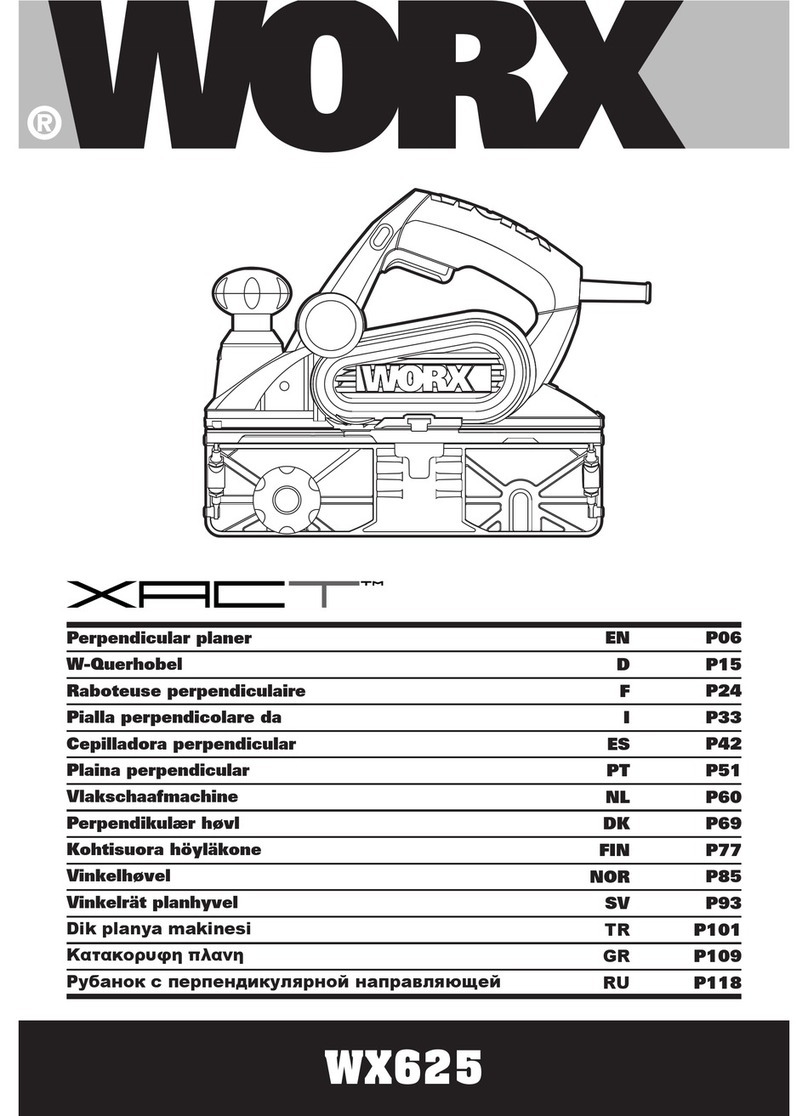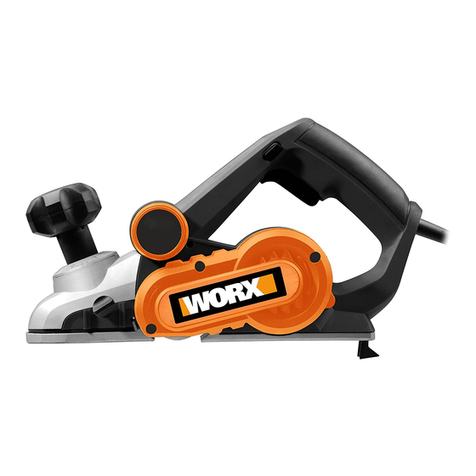OPERATING INSTRUCTIONS
NOTE: Before using the tool, read the
instruction book carefully.
1. SAFETY ON/OFF SWITCH
Your switch is locked off to prevent accidental
starting. Depress the lock off button (2) then
on/off switch (1) and release lock off button
(2). Your switch is now on. To switch off just
release the on/off switch (See Fig A).
2. HAND GRIP AREAS
Always hold your planer firmly with both
hands when operating (See Fig B).
3. CUTTING DEPTH ADJUSTMENT
Smaller cutting depth of 0-2mm (Max. 3.0mm)
is best for most surface planning or rebating.
Rotate the cutting depth adjustment(4) to
set the required cutting depth on the scale
,Scale graduation = 0.125mm). The clockwise
rotation increases the planning depth; the
counterclockwise rotation reduces the planing
depth. (See Fig C)
4. CHIP DEFLECTION DIRECTION(See Fig
D)
Your tool is designed with left and right chip
deflector outlets for controlling the direction of
chips when working in confined areas. Before
starting the cut select left or right outlet by
rotating chip deflector lever accordingly.
5. BASEPLATE STAND
Uplift the rear of the planer, the baseplate
stand (6) can make the machine to be set
down directly and protect the cutting blades
from any damage and the blades from
damaging the surface. When planing, the
stand will be pushed away by the end of the
wood. Always check the stand is free to move
on the base plate (See Fig E).
6. BLADE FITTING AND CHANGING
WARNING: Remove power cord
from the socket before carrying out
any adjustments or changing blades.
The blade has two cutting edges, which can
be reversed. When replacing or reversing the
plane blades, the guide groove guarantees
constant height adjustment.
NOTE: Dull and worn blade cannot be
reground and must be replaced.
Remove the plug from the mains socket.
Using the Socket spanner provided loosen the
3 bolts approximately 1/2 rotation counter-
clockwise. Holding the blade clamp (7) in
position, using a piece of wood slides the
blade (8) out of the blade clamp (7) to remove
the blade from the blade clamp(See FigF).
NOTE: there is no need to remove the
blade clamp (7) as this can change the
factory settings for cutting blade height
control. Before reinserting a new or reverse
blade, always clean both the blade and the
blade seat if dirty. Slide the blade into the
blade clamp in the correct orientation. Check
the blade is equal with the clamp. When
tightening the screws ensure the correct
tightening sequence(See Fig F). Before
starting, rotate by hand to check the roller is
free to rotate.
Rotate the blade head by a further 180o and
repeat the procedure disassembling the
second plane blade.
7. REPLACING A DRIVE BELT
WARNING: 1. Remove the plug from
the socket before carrying out any
adjustment, servicing or maintenance.
2. The cutting blades will be turning and
may cause injury.
Loosen screw and remove belt cover (11),
remove worn drive belt from large pulley (13)
and small pulley (12) and clean them. lace
the new drive belt on the top of pinion and
turning it manually, press it on the large pulley
(13) (See Fig G).Make sure the drive belt runs
exactly along the length grooves of the pinion
and the pulley.
NOTE: Place the belt cover (11) back on
top and tighten it with screw.
8. FITTING A DUST BAG
This accessory can be fitted by sliding the dust
bag inlet over the planer dust extraction (5) as
far as possible. The dust bag will reduce the
efficiency of the exhaust system and the bag
must be emptied frequently to maintain the
efficiency. To empty, open the zip on the rear
9 8
Planer EN
9 8






